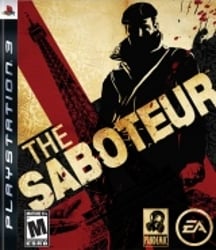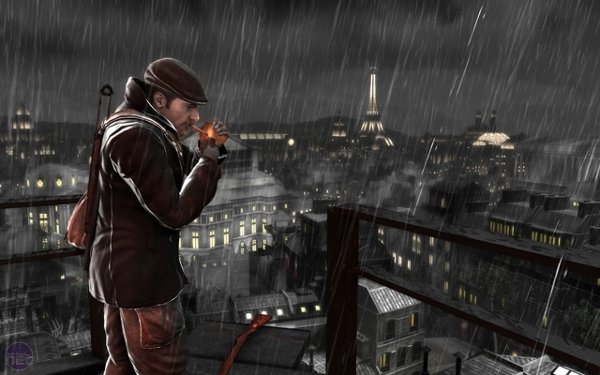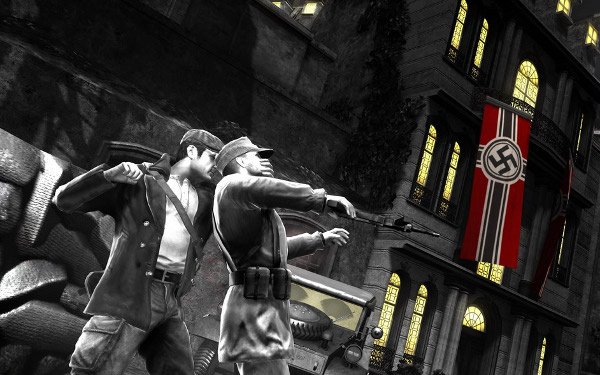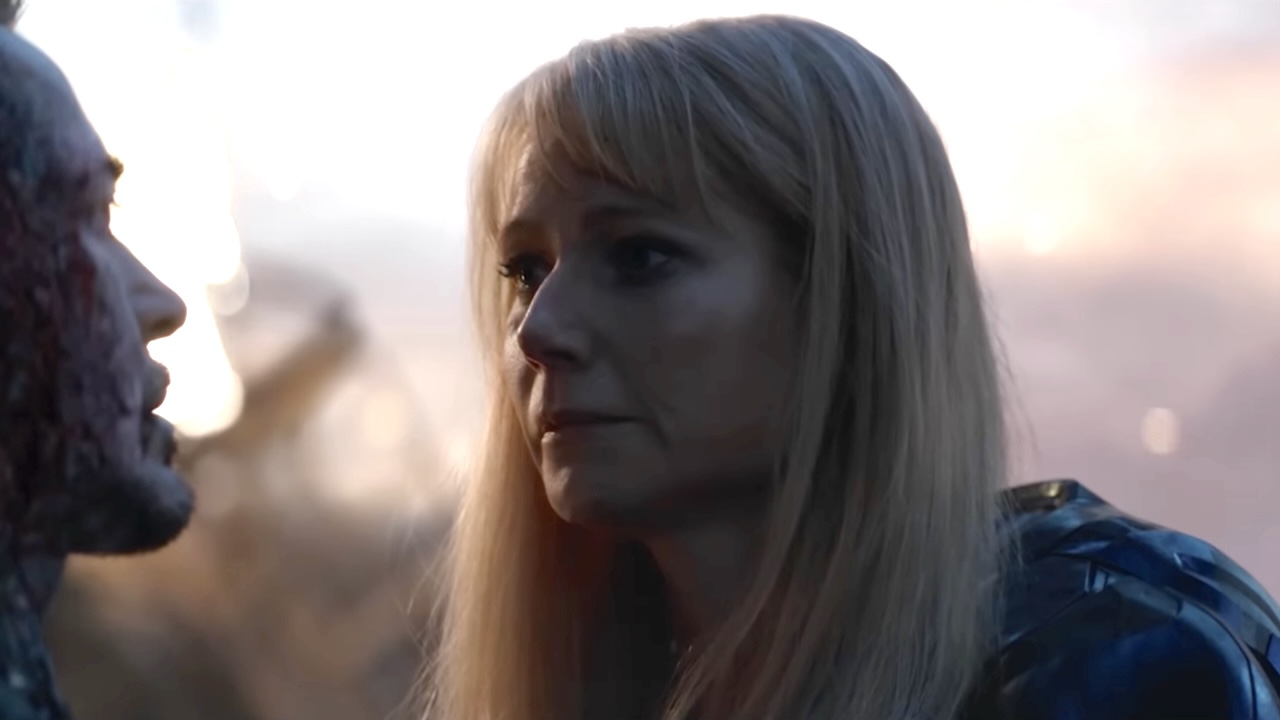
The Saboteur was one of the last big releases of 2009, which is an unenviable position. It's naturally going to be compared to every other open-world game released this year, and there were plenty. It's not a bad game but it would've seemed a lot better if it was released last December.
There have been many World War II games released over the years but Saboteur takes a fresh approach to the subject matter. The main character is not some American/British/Russian soldier but instead, an Irish race car driver. Sean Devlin is racing in Germany when the Nazis begin their attack on France. The Germans suspect Sean and his team may be spies and they're forced to flee to Paris, which shortly thereafter is occupied by the Third Reich. Ironically, the Nazis' false suspicions about Sean and his friends at what ultimately push him to join the French Resistance. The bulk of the game centers on Sean and the Resistance's covert war against the Nazi occupiers.
There are some admittedly predictable plot twists but the story's really what kept me playing. Rather than simply tossing you on the beach of Normandy and telling you to kill Nazis, Saboteur puts you into the shoes of someone who has been personally wronged by the Nazis. While, yeah, you do want to see the Nazis lose the war, Sean's quest for revenge feels equally important. His realization that he's part of a larger, more important cause is a bit forced but the vengeance plot itself works They introduce the nemesis early on and he pops up enough throughout the campaign that you really want him dead by the end.
At the outset of the game, Paris is almost completely black and white. The only spots of color are from lights, fire, blood, and Nazi flags/armbands. It's a really obvious visual indicator of Nazi oppression but it's useful, too. You rack up money (for upgrades and weapons) by attacking Nazi installations and personnel throughout the city. It's easier to seek them out when the red blood of Nazi flags is the only color you see on a block.

When you complete missions, that particular section of Paris will become fully colorized to demonstrate that the citizens now have hope and all that. It's like that movie Pleasantville except with more Nazi-killing. The thing is, the city looks a lot better in black and white. Returning color/hope/freedom/whatever to the city should be this cathartic moment but it's really not. It's not that the game looks bad in full color but it's just, well, ordinary. The shift in color isn't really accompanied by much of a gameplay change, either. The colored sections of Paris are still crawling with Nazis. You'll occasionally see citizens attacking Nazis and I hear it's easier to escape pursuers in these areas (it's still a bitch) but the colorization never feels like the victory it should be. Like Sean, we know that the city/country is still under the thumb of the Nazis.
Though technically a wanted man, Sean can travel the streets of Paris freely as long as he lays low. A ring-shaped Suspicion Meter on the minimap fills up when you engage in conspicuous behavior in front of Nazis. Activities like climbing buildings or wielding a gun will all draw the wrong kind of attention. The meter will run back down to empty if you put your weapon away, stop climbing, etc. It's a clear, rational gameplay mechanic until your Suspicion Meter fills up.
When the meter's full, the Nazis sound the alarm and attack. At this point a red circle appears on the minimap, centered on your location, that signifies the Nazis' search area. The circle recenters on you when you're in line of sight of an enemy so you need to escape any immediate pursuers in order to exit the search circle and end the alert.
Your Daily Blend of Entertainment News
This description make it seem exactly like Grand Theft Auto IV's wanted system but it's not as smooth in practice. In GTA IV, you could slowly lose your Wanted Level within the search circle simply by staying out of their sight for a long enough period of time. Therefore you could give the cops the slip by sitting in a random alley. No such mechanic exists in Saboteur, however. To lose the Nazis while still in the search area, you need to find a designated hiding spot (generally random hatches on roofs) or an ambush point. The latter is a spot where Resistance members are waiting to help you gun down your pursuers. Spots for hiding and ambushing are both in short supply, though, so be prepared for some long chases. The game doesn't help matters by tossing a gross amount of Nazis at you as soon as the alarm is tripped. In GTA, there was a gradual and intuitive escalation of force by the police (first a cop shows up, then a helicopter, then a SWAT team, etc.) but here you get blitzkrieged by the entire Third Reich as soon as you're caught climbing a building.
Nazis' complete hatred of people who climb is only one reason why you'll avoid scaling buildings. The other is Sean's slow-ass climbing. After playing games like Crackdown, inFamous, and Assassin's Creed that allow you to summit a building with lightning speed, Sean just feels sluggish. Granted, he's not a super hero or master assasin but he is fighting an entire army by himself so I think people would've accepted the notion that he's a quick climber too. As you climb, the nearby ledges you can move to are highlighted slightly to make the process smoother but the range of climbable surfaces is smaller than in other games so there are plenty of occasions where you might get halfway up a building and realize you can't climb any further. Many city blocks are too far apart to make traveling from rooftop to rooftop feasible, anyway. Climbing's pretty much pointless except for a few missions that require it. With driving being the obviously preferred method of transportation, it's unclear why they bothered allowing you to scramble up walls to begin with.

Driving's not really all that much fun, either. There's an impressive collection of cars from that time period and catchy music on the radio but the cars just aren't entertaining to drive. They handle like bricks on wheels and tend to get stuck on the environment easily. Maybe this is how cars actually handled in the 1930's but it's one bit of realism that we could've done without.
The game does a poor job of creating a context in which driving these shitboxes would be fun, too. Each mission seems to just have an unnecessary "Drive here and talk to this guy" step - couldn't we have just skipped over that bit with a cutscene or something? The lack of fast travel options means that much of your time with Saboteur will be spent commuting through the admittedly large map. There are a couple races in the game's campaign (which makes sense, considering it's Sean's pre-war job) and they're drawn-out affairs in which you must merely pass a series of identical cars once to win. It doesn't actually feel like a race at all. The cars seem to be deliberately spaced so that you'll pass the front-runner as soon as the race is about to end.
When he's not being chased by the Third Reich, Sean Devlin is striking high-profile Nazi targets. Most of his missions involve assassination of officials, demolition of key installations, or rescuing prisoners. While you can just run into Nazi bases and shoot everyone, the game also allows you to take a stealth approach. You can sneak up to Nazis, snap their necks and then change into their uniforms. This allows you to walk around restricted areas but your Suspicion Meter will build up if you linger near guards too long as they'll begin to notice how poorly your uniform fits. Much like Uncharted 2's stealth sequences, though, sneaking around is only delaying the inevitable gunfight. Gestapo officers are better than average troops at seeing through disguises and there's no way to quietly dispatch two or more guards at a time without raising an alarm. The appeal of stealth is simply being able to thin the enemy's ranks before the shooting starts.
The stealth aspect of the game is serviceable but I found myself using it less and less over the course of the game. The issue is that it's very easy to die in Saboteur. The Nazis are expert marksman even at long range and on Normal difficulty. The game has a regenerating health system but not the snap-to-cover mechanic that typically accompanies it in third-person shooters. Instead of pressing a button to hide behind cover, you run against the cover (a wall, pile of sandbags, a truck, etc.) and the game automatically makes you duck behind it. The game's a bit spotty at detecting this, though, so often you'll get gunned down while running in place next to the sandbags you're trying to curl up next to.

The game is very inconsistent when it comes to checkpoint saves, too. The combination of infrequent saves and frequent deaths discourages experimentation. The first time I attempt a mission I might sneak in the back entrance and then stealth-kill several guards. If I die in the subsequent gunfight, though, and have to re-do the whole mission, I'm not going to go through the lengthy stealth process again. I suspect most players will just play the game like a vanilla shooter and I can't blame them - it's what the game ultimately drives you to do.
The game's campaign will probably take you about 12 hours. It's a decent length (and there's a bunch of side content to play, too) but the third and final act does feel a bit short. I thought they could've stretched out the portion where the Nazis are on their heels and the liberation of the city is imminent. The last mission shows a nihilistic side to the Nazi occupation force, an enfeebled army now stranded in the midst of a hostile country. It would've been interesting to stretch that concept further. As is, the game ends on an anticlimactic note. Pandemic just ran out of time, I suppose.
It's easy to see why Saboteur was greenlit. Sandbox games are a popular genre and World War II is a popular setting so merging them seems like a savvy move. A good premise isn't enough, though. Ultimately it comes down to gameplay and while Saboteur has most of the features you'd want in a sandbox game, it doesn't execute them as well as similar games.
Players: 1 Player
Platform(s): Xbox 360, PS3 (reviewed), PC
Developer: Pandemic Studios
Publisher: Electronic Arts
ESRB: Mature
Rating:

Staff Writer at CinemaBlend.

